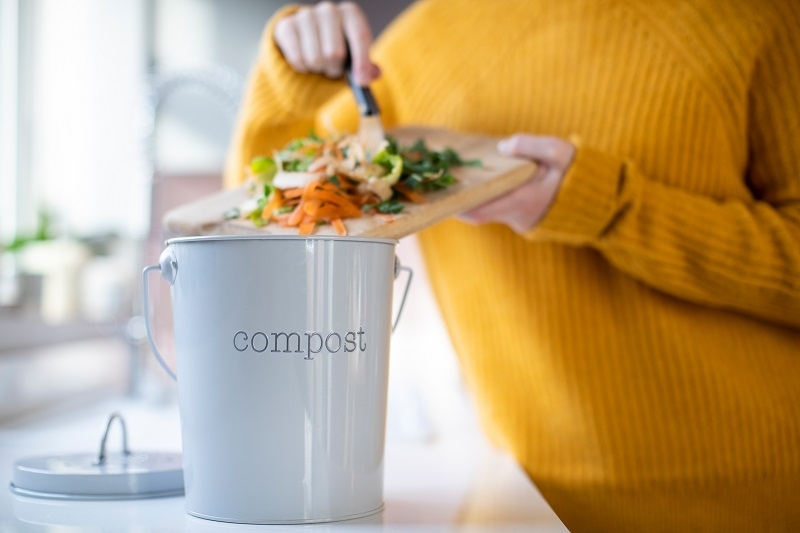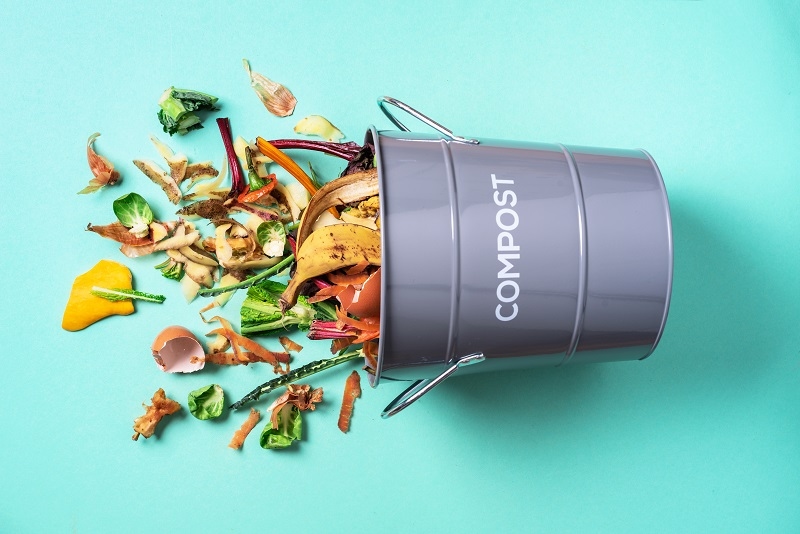
Home composting is one of the easiest and most effective methods of waste reduction and to produce nutritious soil in your garden. Composting can be made to fit every type of lifestyle, with or without a backyard or even a small apartment. We have included all the information that you need to know about composting at home, including starting with composting, things to compost, and composting indoors, in this guide.
Composting at home can be a very complex task, but it does not have to be so. Even using some simple equipment and a bit of expertise, anybody can make compost out of kitchen scraps and yard waste, which is healthy compost. The process of composting is a natural process in which the organic waste decomposes into fertile material that can be applied to your garden to enhance the soil.
Composting is everything to do with the decomposition of organic matter. Your scraps and leaves, and other biodegradable food, are fed on by microorganisms, including fungi and bacteria. These microbes eventually transform waste into dark, crumbly soil known as compost. It involves a ratio of greens and browns (carbon-based materials), moisture, and adequate aeration.
Following home composting has a number of advantages. First, it minimizes the waste directed to landfills, which is beneficial to the environment. Second, it produces soil that could be nutrient-enriched to increase the growth of plants. Third, it is cost-effective as you do not have to spend money on purchasing fertilizers. Finally, another aspect of sustainability and nature to learn is composting.
You should begin with simple composting in case you are new to composting. An introductory composting handbook has the potential to prevent errors and ensure that it is a pleasant experience.
The initial process in the home composting process involves choosing a compost bin. It has numerous choices, as there are regular outdoor bins, tumblers, and indoor bins. A small indoor composting bin suits small areas or apartments. Find bins that are well ventilated and do not require carrying heavy materials up the stairs to add scraps or turn compost.
Once you have a bin, choose a location. Outdoor compost bins should be placed in a shaded, dry area with good drainage. Indoor compost bins should be placed in a cool, dry spot, such as a kitchen corner or balcony. Make sure it is convenient to add food scraps regularly.
Start with a coat of brown, such as shredded newspaper or dry leaves. Then, add greens, including fruit and vegetable scraps. Use alternating stripes of green and brown in order to have a balance. Your compost needs to be damp but not much so, and you should stir it up sometimes to accelerate the process.
It is necessary to know what to compost at home in order to achieve successful composting. Not every scrap and material that is produced in the kitchen can be composted; therefore, it is good to be aware of which ones can and cannot.
The majority of the scraps of fruits and vegetables are compostable. This involves peels, cores, and trimmings. Grounds of coffee, tea bags, eggshells, and remaining grains are also good.
Leaves, grass cuttings, and small branches are very good for composting. Browns may also be added by using paper, cardboard, and shredded newspaper. Plastic, metallic, and treated wood are not to be added because they can not break down.
Home composting can be done in an apartment, and it is not as hard as you may imagine. You can produce deep compost even without a yard and with small bins or special indoor systems.
In the case of apartment composting, a small container with a lid and holes in it is to be taken into consideration. They can be bokashi bins, worm composting bins, or just some basic countertop composters. These bins assist in the containment of the smells and make it easier to compost in the small areas.

Following composting do’s and don’ts will make your composting experience smooth, easy, and successful.
Composting inside can enable one to have the benefit of the composting process at home, even without the space.
Bokashi compost is a fermentation process that involves the use of special bran to destroy food waste at a faster rate. It is efficient with the apartments since it does not produce strong odors, and it can withstand practically all kinds of cooking residues, including meat and dairy.
Worm composting, as it has been said above, is an excellent indoor option. Worm bins do not have to be large, and worms are effective in food scrap processing. The worm castings are very nutritious to the plants as a result.
Composters made on top Countertop composters are a small bin that fits into your kitchen. Some of them are manual, where you have to turn the compost to accelerate the decomposition, and some are electric-controlled controlled which is faster. The bins are easily available and convenient for composting in limited areas.
Composting can only be successful when well-maintained. Moisture, aeration, and balance are also to be paid attention to to maintain a healthy compost.
Compost should be turned or stirred to add oxygen, which is required by microbes to decompose matter. In the case of outdoor bins, rotate your compost every few weeks. In the case of indoor bins, they should be stirred more often to avoid an unpleasant aroma.
Compost must not be wet but moist. In case it is dry, add water/greens. In case it is too moist, it should be sprinkled with browns such as shredded newspaper or dry leaves. Adequate moisture maintains the activity of microbes and decomposition.
Home composting is a cheap, satisfying, and environmentally friendly practice. Through this novice composting guide, understanding what should be composted at home and researching indoor composting, anyone can produce rich compost and also cut down on waste. Keep in mind the rules and rules of composting, keep your compost clean, and put it back into your garden or plants. Composting at home, regardless of whether you live in a house with a backyard or an apartment, is a simple action that is easy to take in order to lead an environmentally healthy zero-waste lifestyle and leave an impact.
This content was created by AI